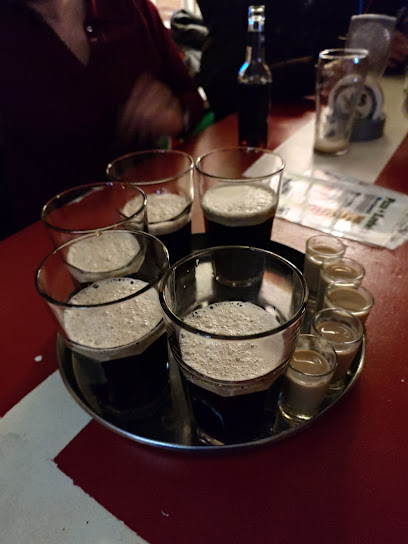
U. Schmiedgasse 16: A Glimpse into Rothenburg's Architectural Heritage
Discover the timeless charm of Rothenburg ob der Tauber at u. Schmiedgasse 16, a captivating address in the heart of Germany's best-preserved medieval town, offering a glimpse into centuries of history and architectural beauty.
U. Schmiedgasse 16, nestled in the heart of Rothenburg ob der Tauber, is more than just an address; it's a portal to the town's rich architectural and historical tapestry. Located on the famed Schmiedgasse (Blacksmith's Lane), this building contributes to the street's enchanting atmosphere, characterized by well-preserved medieval facades and a sense of stepping back in time. While the specific history of this particular building may be less documented than some of its more famous neighbors, its presence within this historic streetscape speaks volumes about Rothenburg's enduring charm and commitment to preserving its heritage. The lane itself is a visual feast, lined with half-timbered houses adorned with flower boxes, each telling a silent story of centuries past. Exploring Schmiedgasse offers an immersive experience, allowing visitors to soak in the ambiance of a bygone era and appreciate the architectural details that define Rothenburg's unique character. It's a place where history comes alive, inviting you to wander, discover, and connect with the spirit of this captivating medieval town. Schmiedgasse is also home to the Baumeisterhaus, or Master Builder's house, which was built in 1596.
A brief summary to u. Schmiedgasse 16
- u. Schmiedgasse 16, Rothenburg ob der Tauber, Rothenburg ob der Tauber, 91541, DE
Local tips
- Explore Rothenburg at night: The atmosphere transforms after the tour buses leave, offering a more intimate and magical experience of the medieval streets.
- Climb the Town Hall Tower for panoramic views: Gain a unique perspective of Rothenburg's layout and surrounding landscape from this historic vantage point (small fee applies).
- Try a Schneeball: Sample this local pastry, a Rothenburg specialty, available in various flavors from traditional powdered sugar to chocolate.
Getting There
-
Walking
U. Schmiedgasse 16 is located within Rothenburg's old town, which is primarily pedestrianized. From Marktplatz (market square), walk south along Obere Schmiedgasse. U. Schmiedgasse 16 will be on your left-hand side as you proceed down the street. The walk is short and direct, allowing you to soak in the medieval atmosphere.
-
Public Transport
If arriving by train at Rothenburg ob der Tauber station, exit the station and walk straight ahead following the Bahnhofstraße. Continue onto Rödergasse, which leads directly to the old town walls. Enter the old town through the Röderbogen gate. Once inside, follow the main street (Herrngasse) to Marktplatz. From Marktplatz, follow the walking directions above to u. Schmiedgasse 16. A single train ticket from Nuremberg to Rothenburg costs approximately €20-€30, and the walk from the station to the old town takes about 10-15 minutes.
-
Driving
Parking within Rothenburg's old town is restricted. It's best to park in one of the large car parks (P1-P5) located outside the city walls. From any of these car parks, follow the signs towards the old town (Altstadt). Once inside the old town, follow signs towards Marktplatz, then follow the walking directions above to u. Schmiedgasse 16. Parking fees in the outer car parks range from €6-€8 per day.
Discover more about u. Schmiedgasse 16
Iconic landmarks you can’t miss
u. Schmiedgasse 16
0.0 km
Experience the enchanting charm of Rothenburg ob der Tauber's historic Schmiedgasse, where medieval architecture and vibrant culture await.
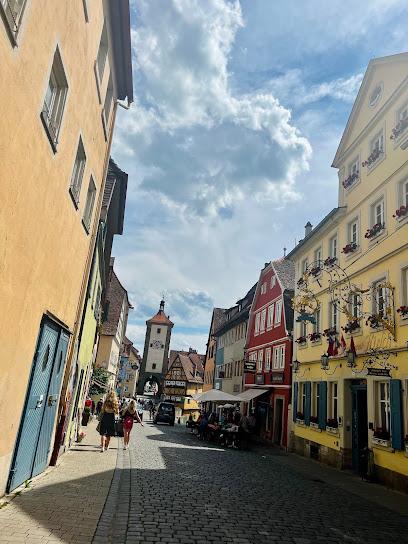
Glocke A. u. K. Thürauf
0.1 km
Experience Franconian charm in the heart of Rothenburg ob der Tauber at Glocke A. u. K. Thürauf, a historic hotel, inn, restaurant, and winery nestled in the picturesque Plönlein.

Johannisbrunnen
0.1 km
Explore Johannisbrunnen in Rothenburg ob der Tauber, a historical landmark that showcases the town's breathtaking medieval architecture.
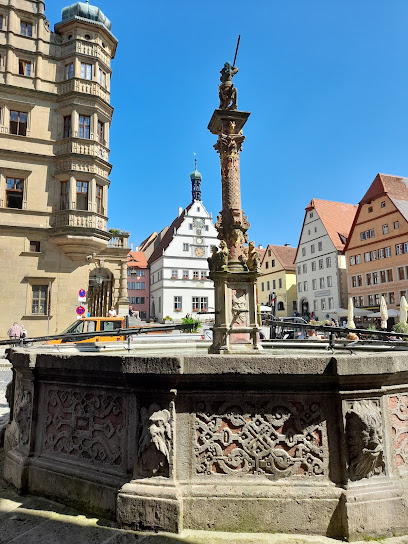
Johannite Tower
0.1 km
Explore the historical Johannite Tower in Rothenburg ob der Tauber, a stunning landmark rich in medieval architecture and breathtaking views.
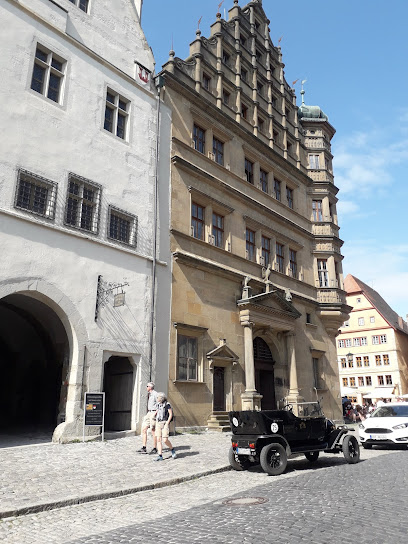
Cabbage Tower
0.2 km
Explore the historic Cabbage Tower, a remarkable landmark in Rothenburg ob der Tauber, that showcases medieval architecture and rich history.
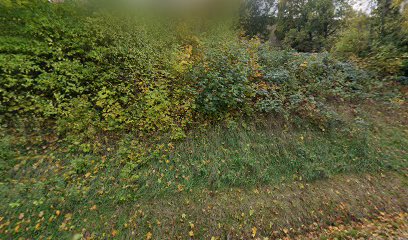
Röderbrunnen
0.3 km
Explore Röderbrunnen, a historical treasure in Rothenburg ob der Tauber, where medieval charm and captivating stories await every visitor.

Rossmühle
0.3 km
Discover the charming Rossmühle in Rothenburg ob der Tauber, where medieval history and picturesque landscapes unite in a breathtaking experience.
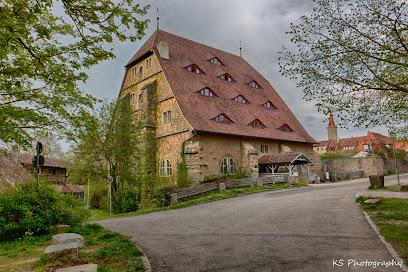
Furbringerscheune Tower
0.4 km
Discover the history and charm of Rothenburg ob der Tauber at the iconic Furbringerscheune Tower, a must-visit landmark for every traveler.
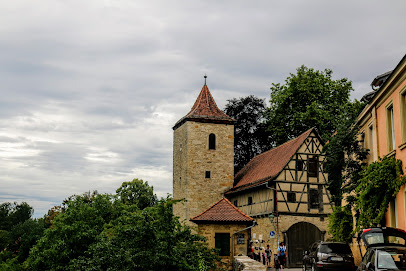
Röderbastei
0.4 km
Explore the Röderbastei, a stunning historical landmark in Rothenburg ob der Tauber, offering breathtaking views and a glimpse into medieval history.
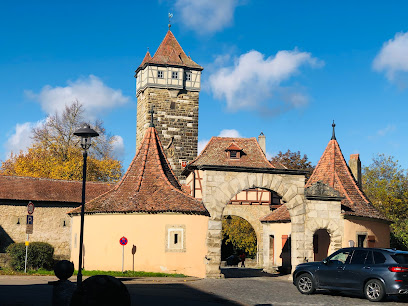
Castle Gate
0.4 km
Experience the historical grandeur of Rothenburg's Castle Gate, a breathtaking gateway to Germany's medieval past, perfect for tourists and history lovers alike.
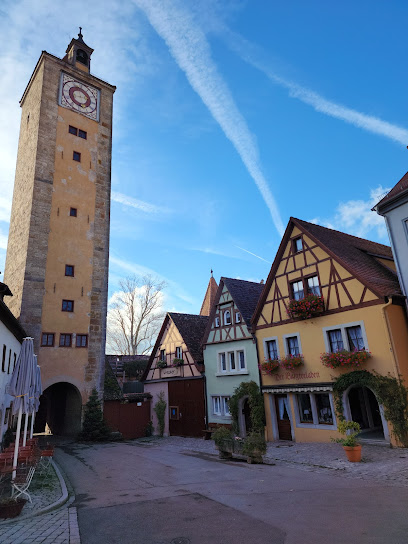
Burgeck
0.4 km
Explore Burgeck, a captivating historical landmark in Rothenburg ob der Tauber, showcasing medieval architecture and rich local history.
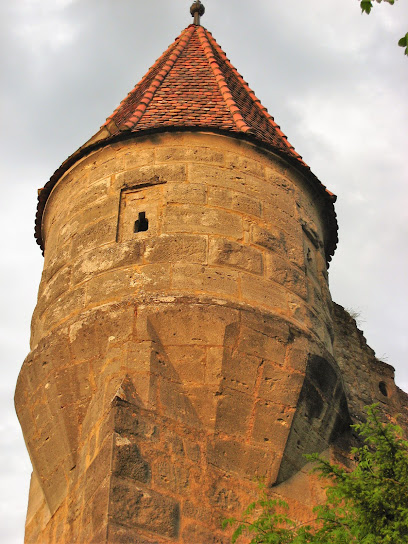
Crowd Tower
0.4 km
Explore the rich history and stunning architecture of the Crowd Tower in Rothenburg ob der Tauber, a must-visit historical landmark in Bavaria.
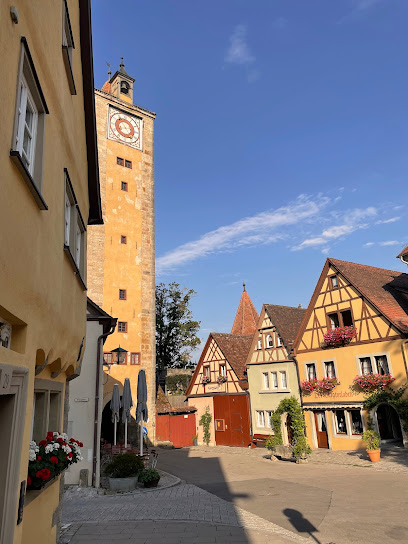
Womens Tower
0.4 km
Explore the Women's Tower in Rothenburg ob der Tauber, a stunning historical landmark with breathtaking views and rich medieval history.

Spitalbastei
0.5 km
Explore the stunning Spitalbastei in Rothenburg ob der Tauber, a historical bastion offering breathtaking views and a glimpse into medieval architecture.
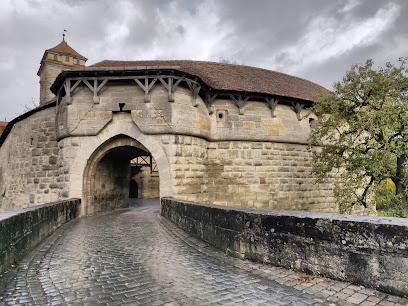
Aufgang zur Stadtmauer
0.6 km
Discover the historical charm of Rothenburg's city walls and enjoy breathtaking views from the ascent at Aufgang zur Stadtmauer.

Unmissable attractions to see
Johannisgarten
0.1 km
Explore the serene beauty of Johannisgarten, a tranquil garden oasis in Rothenburg ob der Tauber, where history and nature intertwine.
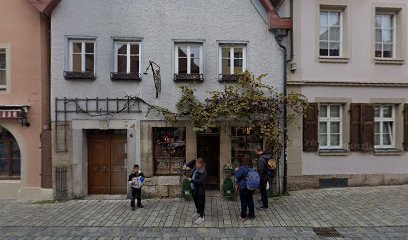
Medieval Crime Museum
0.1 km
Explore the chilling history of crime and punishment at the Medieval Crime Museum in Rothenburg ob der Tauber, where the past unfolds in captivating exhibits.
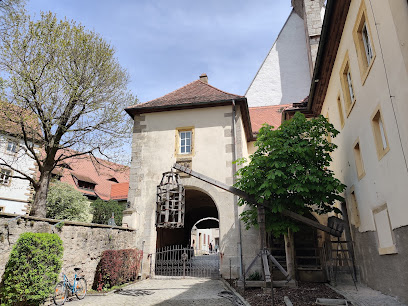
Siebersturm
0.1 km
Explore Siebersturm, a remarkable historical landmark in Rothenburg ob der Tauber, where medieval charm meets stunning architecture.
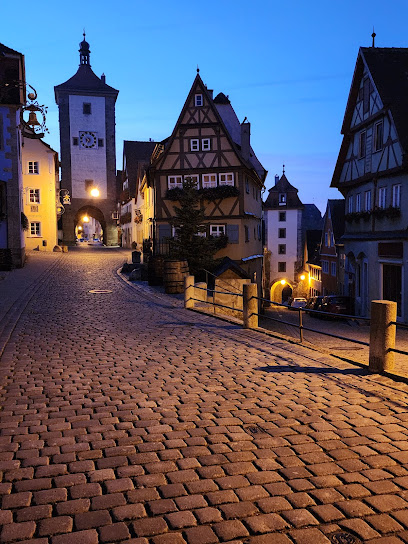
Kobolzeller Turm
0.1 km
Discover the historical Kobolzeller Turm, a stunning medieval landmark in Rothenburg ob der Tauber, offering breathtaking views and rich history.

Kobolzeller Vortor
0.2 km
Discover the enchanting Kobolzeller Vortor, a historical landmark in Rothenburg ob der Tauber, offering breathtaking views and a glimpse into medieval history.

Aussichtspunkt/ viewpoint
0.2 km
Discover the stunning views of Rothenburg ob der Tauber from the Aussichtspunkt, a must-visit tourist attraction showcasing medieval beauty and charm.
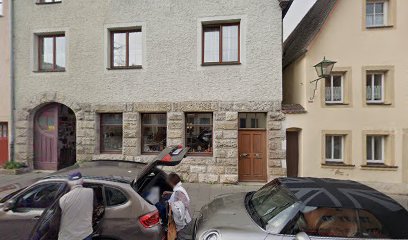
Brunnen im Alten Keller
0.2 km
Experience the tranquility of Brunnen im Alten Keller, a hidden gem in Rothenburg ob der Tauber, perfect for relaxation and historic exploration.
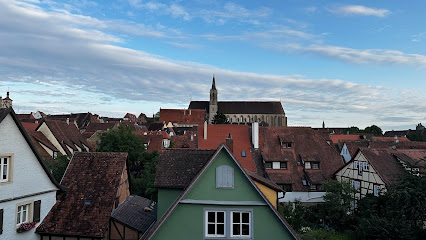
Alter Ziebrunnen
0.2 km
Explore the serene beauty and historical charm of Alter Ziebrunnen in Rothenburg ob der Tauber, a captivating attraction rich in culture and tranquility.
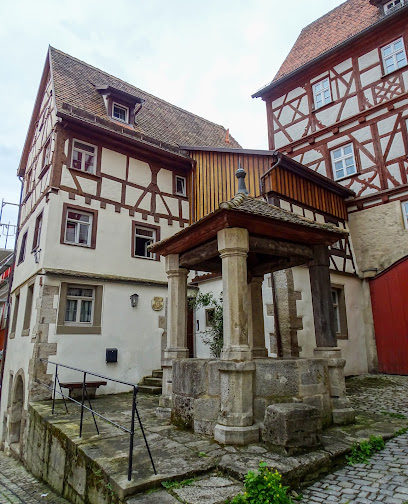
Fleisch- und Tanzhaus
0.2 km
Explore the architectural beauty and rich history of Fleisch- und Tanzhaus in Rothenburg ob der Tauber, a captivating medieval landmark.
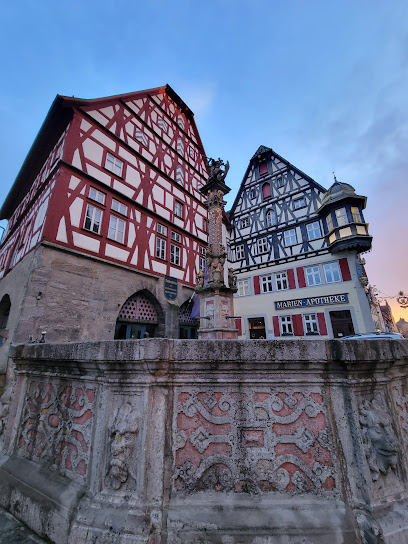
Old Rothenburg Craftsmen House
0.2 km
Immerse yourself in the artisanal history of Rothenburg ob der Tauber at the Old Rothenburg Craftsmen House, a captivating museum experience.

St George Fountain
0.2 km
Discover the enchanting St George Fountain in Rothenburg ob der Tauber, a historical landmark rich in artistry and charm.

German Christmas Museum
0.2 km
Explore the enchanting German Christmas Museum in Rothenburg ob der Tauber, showcasing the rich traditions and history of Christmas celebrations.
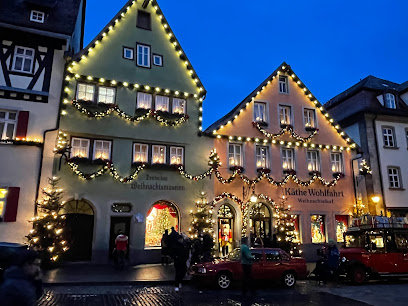
Käthe Wohlfahrt - Weihnachtsdorf
0.2 km
Discover Käthe Wohlfahrt, a magical Christmas village in Rothenburg ob der Tauber, where festive charm meets unique Bavarian gifts and decorations.
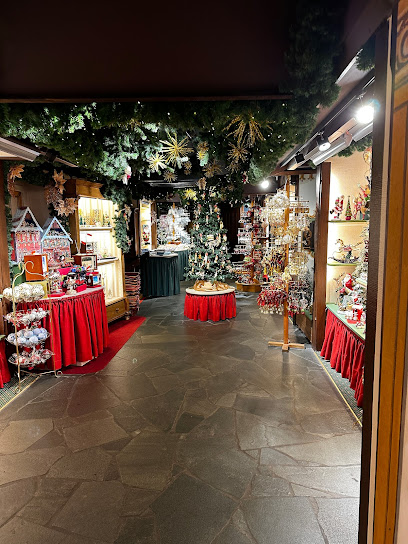
Marktplatz
0.2 km
Experience the medieval charm and vibrant culture of Rothenburg ob der Tauber at Marktplatz, the town's iconic and picturesque square.
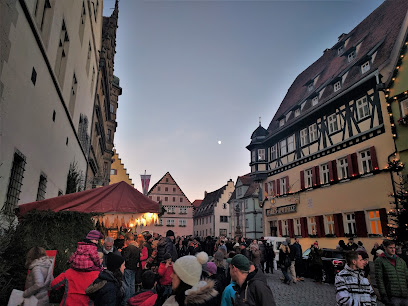
Town Hall Tower
0.2 km
Discover the Town Hall Tower in Rothenburg ob der Tauber, a stunning historical landmark offering breathtaking views and rich cultural experiences.
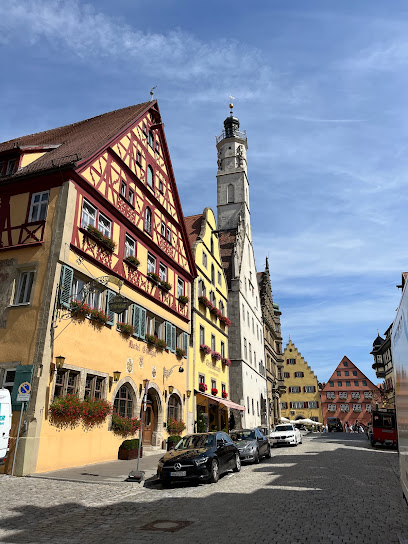
Essential places to dine
Meet for lunch
0.1 km
Experience authentic German cuisine at Meet for Lunch in Rothenburg ob der Tauber - where tradition meets flavor in a charming setting.
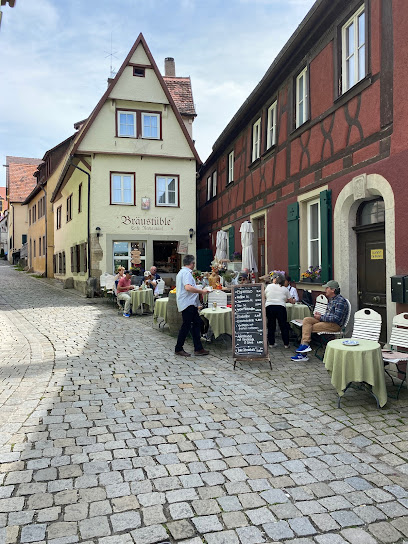
Peking
0.1 km
Experience authentic Chinese cuisine at Peking in Rothenburg ob der Tauber - where tradition meets flavor in every dish.
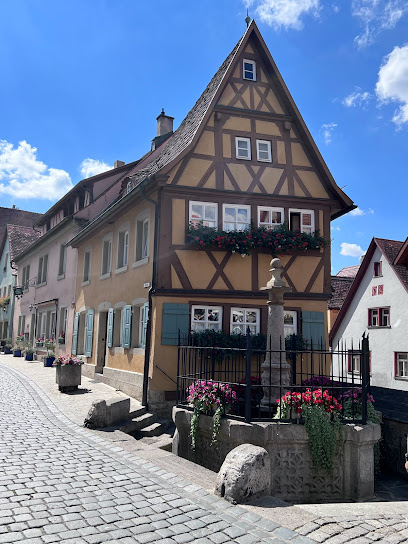
Restaurant Don Gallo
0.1 km
Experience exquisite Italian cuisine at Restaurant Don Gallo in Rothenburg ob der Tauber—where every dish tells a story.
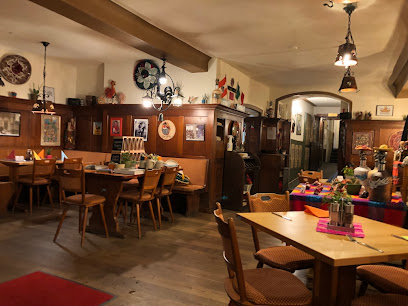
Landwehr-Bräu am Turm
0.1 km
Discover Rothenburg's charm at Landwehr-Bräu am Turm - where handcrafted beers meet authentic German cuisine in a cozy brewpub setting.
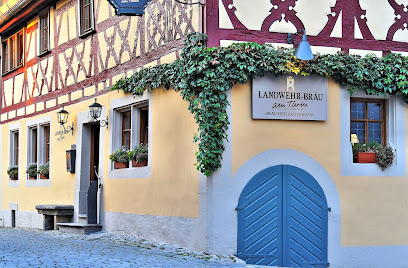
Zum Schwan
0.1 km
Experience authentic German cuisine at Zum Schwan in Rothenburg ob der Tauber – where every meal is a delightful journey through local flavors.
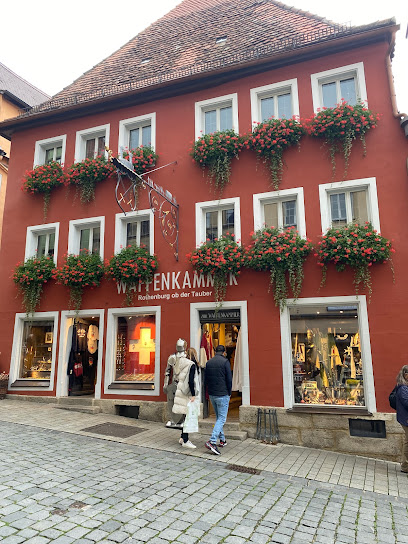
Zur Hoell
0.2 km
Experience authentic German cuisine in a historic setting at Zur Hoell in Rothenburg ob der Tauber.
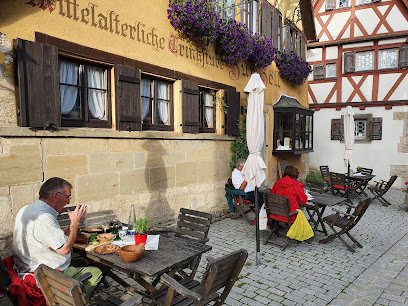
Restaurant Alter Keller
0.2 km
Experience authentic German cuisine at Restaurant Alter Keller in Rothenburg ob der Tauber - where tradition meets flavor in every dish.
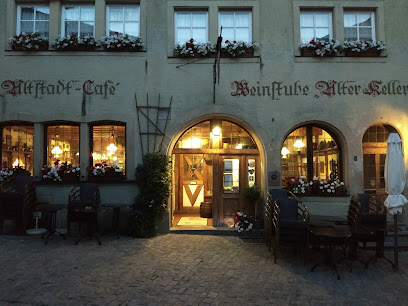
Hotel-Gasthof Goldener Greifen
0.2 km
Experience authentic Franconian cuisine at Hotel-Gasthof Goldener Greifen - where tradition meets comfort in Rothenburg ob der Tauber.

Baumeisterhaus Inh. Dieter Neupert
0.2 km
Experience authentic German cuisine at Baumeisterhaus in Rothenburg ob der Tauber, where tradition meets taste in a charming setting.
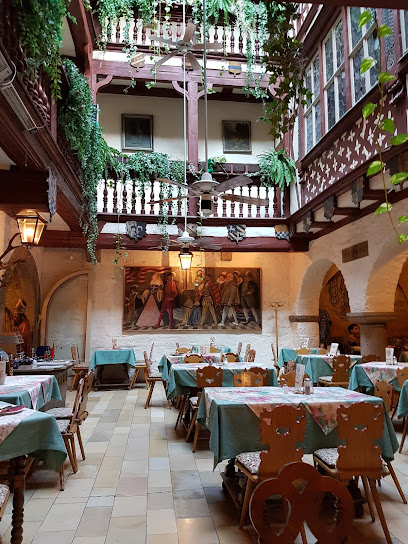
Profumo di Pasta da Giuseppe
0.2 km
Experience authentic Italian cuisine at Profumo di Pasta da Giuseppe in Rothenburg ob der Tauber – where every dish tells a story.
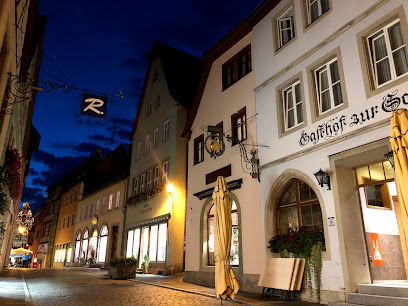
Restaurant Ehmanns
0.2 km
Savor authentic German and Franconian cuisine at Restaurant Ehmanns in Rothenburg ob der Tauber – a culinary treasure amidst historic charm.
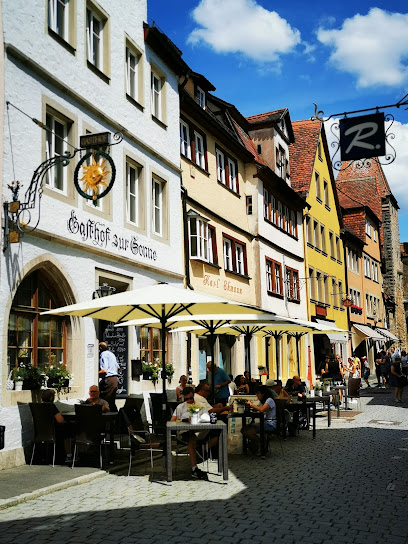
Ratsstube
0.2 km
Discover authentic German cuisine at Ratsstube in Rothenburg ob der Tauber, where tradition meets warm hospitality.
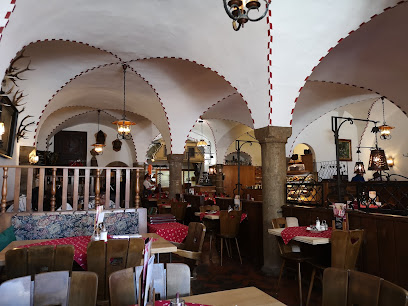
Romantik Hotel & Restaurant Markusturm
0.3 km
Discover culinary excellence and unique accommodations at Romantik Hotel & Restaurant Markusturm in beautiful Rothenburg ob der Tauber.
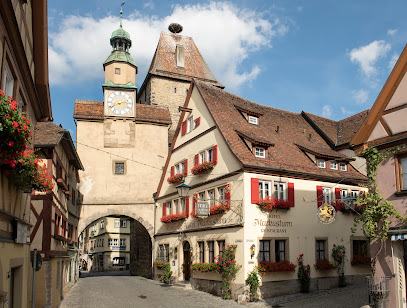
Eiscafé-Pizzeria Italia
0.3 km
Discover authentic Italian flavors at Eiscafé-Pizzeria Italia in Rothenburg ob der Tauber – where every bite transports you to Italy.
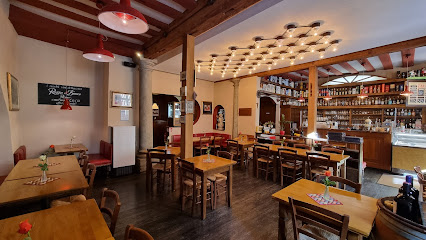
Restaurant Goldenes Lamm
0.3 km
Discover authentic German cuisine at Restaurant Goldenes Lamm in Rothenburg ob der Tauber - where tradition meets taste.
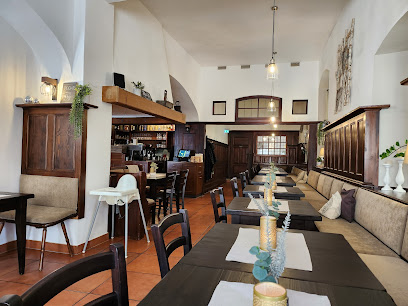
Markets, malls and hidden boutiques
AnRa Mode
0.0 km
Discover AnRa Mode in Rothenburg ob der Tauber: a chic clothing store offering unique fashion with a local flair amidst stunning medieval architecture.
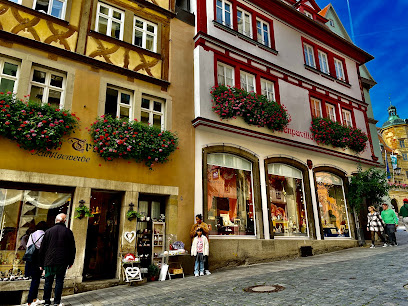
Sweets Company
0.0 km
Explore Rothenburg ob der Tauber's Sweets Company for an unforgettable candy experience filled with artisanal delights and local flavors.
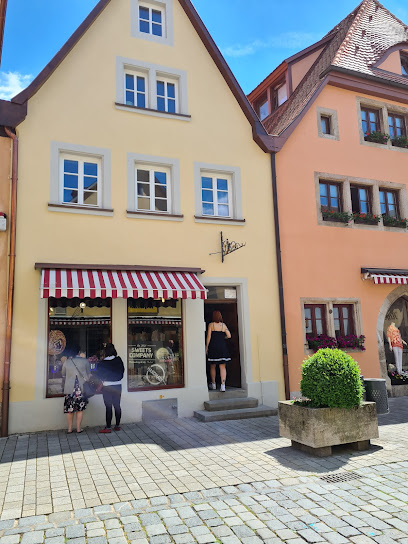
Rothenburg
0.1 km
Discover a charming gift shop in Rothenburg ob der Tauber, showcasing unique local crafts and souvenirs that embody the essence of this medieval gem.
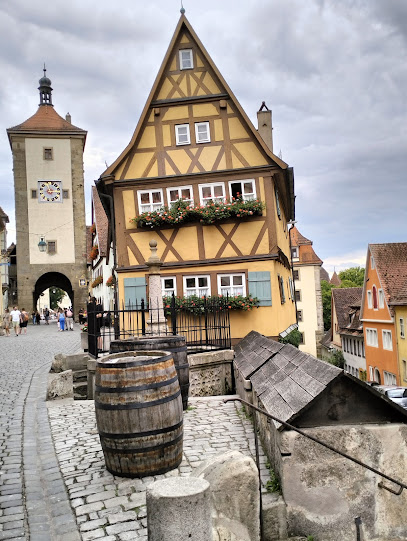
Himmlisches Plönlein No. 5
0.1 km
Explore unique gifts and local craftsmanship at Himmlisches Plönlein No. 5 in Rothenburg ob der Tauber, a charming souvenir haven for every traveler.
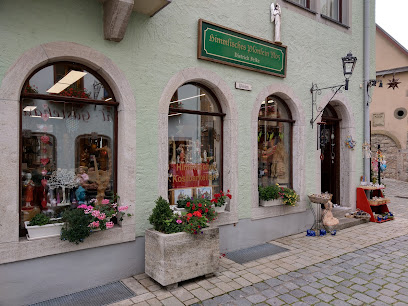
Spitzweghaus
0.1 km
Explore Rothenburg ob der Tauber's Spitzweghaus, a delightful gift shop offering unique souvenirs, local crafts, and a taste of authentic German culture.
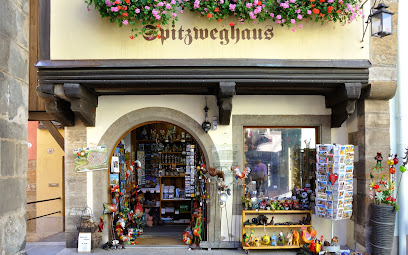
Altstadtladen
0.1 km
Discover unique gifts and local crafts at Altstadtladen, Rothenburg ob der Tauber's charming gift shop for memorable souvenirs.
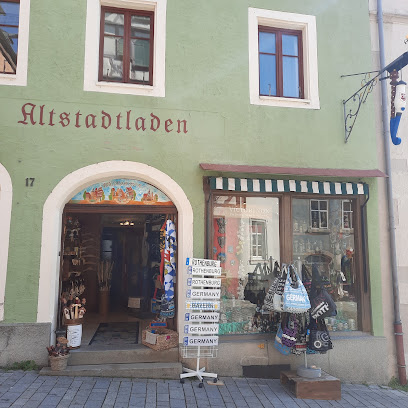
Friese Manuela Haus der 1000 Geschenke
0.2 km
Explore Friese Manuela Haus der 1000 Geschenke, a charming gift shop in Rothenburg ob der Tauber offering unique souvenirs and local crafts.
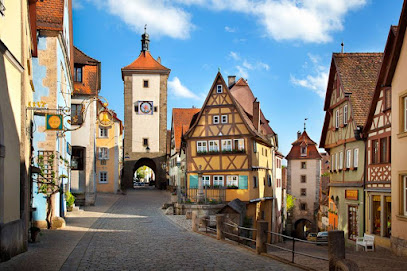
Waffenkammer Rothenburg o.d.T.
0.2 km
Explore the Waffenkammer in Rothenburg ob der Tauber for an unforgettable journey through medieval craftsmanship and history.

Birkenstock Shop - Schuh Outlet Degenhardt GmbH
0.2 km
Explore comfort and style at the Birkenstock Shop in Rothenburg ob der Tauber, your destination for quality footwear in a historic setting.
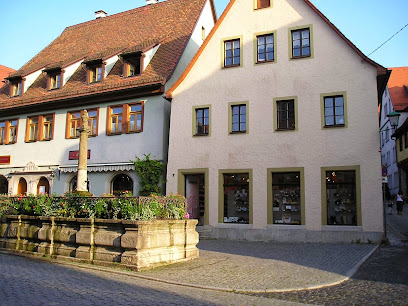
Bunte Truhe
0.2 km
Explore Bunte Truhe in Rothenburg ob der Tauber for handcrafted needlework and unique Christmas decorations that capture the essence of local craftsmanship.

Hasi's Laden
0.2 km
Explore unique handcrafted treasures at Hasi's Laden, your charming stop for authentic souvenirs in Rothenburg ob der Tauber.
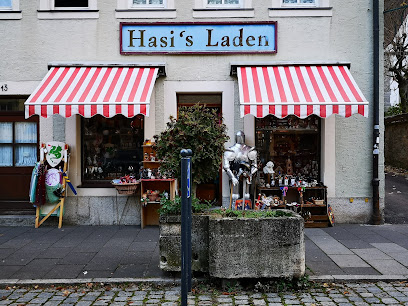
Teddys Rothenburg
0.2 km
Discover a whimsical world of toys, collectibles, and baby clothing at Teddys Rothenburg in the heart of Rothenburg ob der Tauber.
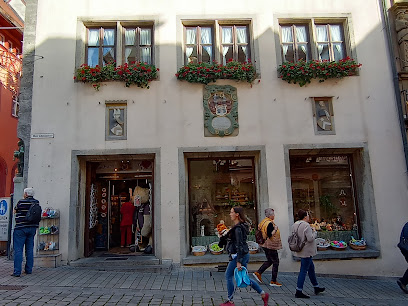
Geschenkehaus am Markt
0.2 km
Discover unique gifts and local crafts at Geschenkehaus am Markt, a treasure trove in the heart of Rothenburg ob der Tauber.
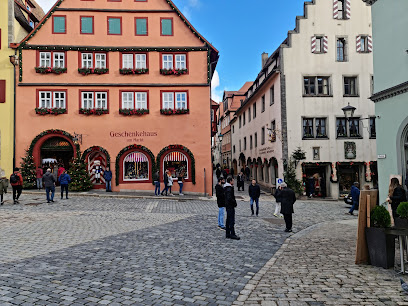
Klaus Abt
0.2 km
Discover unique gifts, costume jewelry, and local crafts at Klaus Abt, the premier gift shop in Rothenburg ob der Tauber.
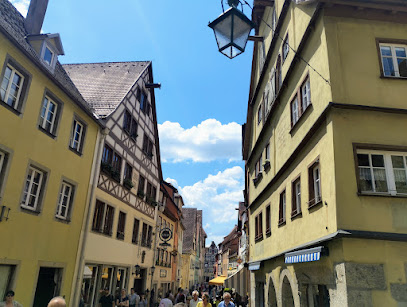
Haller's drunter & drüber
0.2 km
Discover unique women's fashion and accessories at Haller's drunter & drüber in Rothenburg ob der Tauber, a must-visit destination for stylish souvenirs.
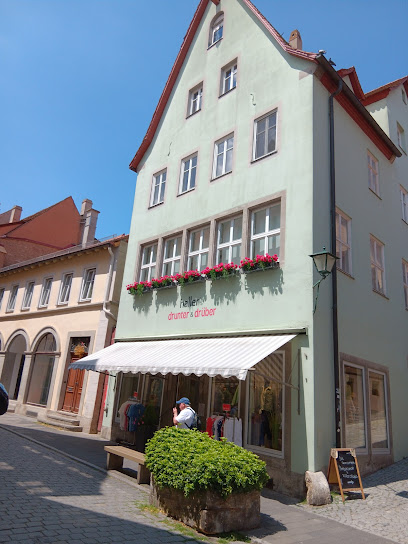
Essential bars & hidden hideouts
Paula’s Biergarten
0.2 km
Discover the vibrant atmosphere and local brews at Paula’s Biergarten in Rothenburg ob der Tauber, the perfect spot for relaxation and fun.
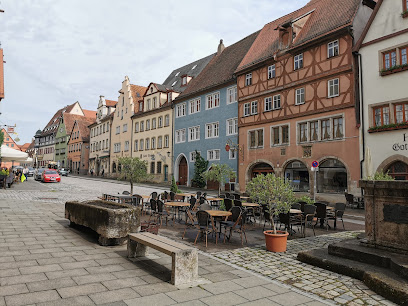
Chico Diaz Salsaborrr
0.2 km
Chico Diaz Salsaborrr: A vibrant bar in Rothenburg ob der Tauber offering an unforgettable blend of culture, music, and delicious drinks.

Reichsstadt Vinothek
0.3 km
Experience the rich flavors of Rothenburg ob der Tauber at Reichsstadt Vinothek, where local wines and charming ambiance await.
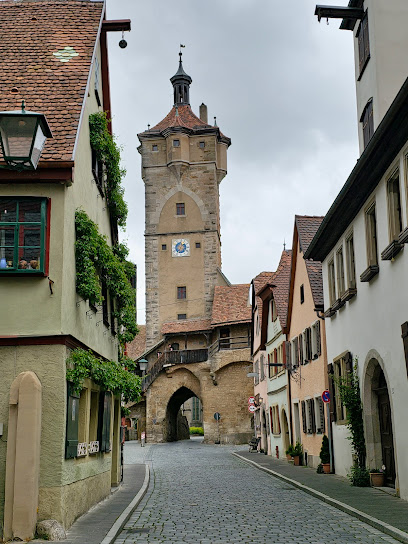
MUCHO AMOR Café & Bar
0.3 km
Discover Mucho Amor Café & Bar in Rothenburg ob der Tauber, where delightful cocktails and a cozy atmosphere await every tourist.
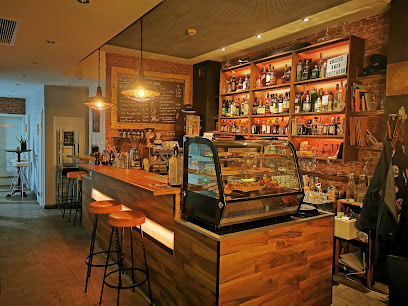
Café Lebenslust
0.3 km
Discover the delightful Café Lebenslust in Rothenburg ob der Tauber, where delicious pastries and cozy ambiance await every visitor.

Refugium 21
0.3 km
Experience the charm and warmth of Refugium 21, a cozy bar in the heart of Rothenburg ob der Tauber, offering delightful drinks and a welcoming atmosphere.
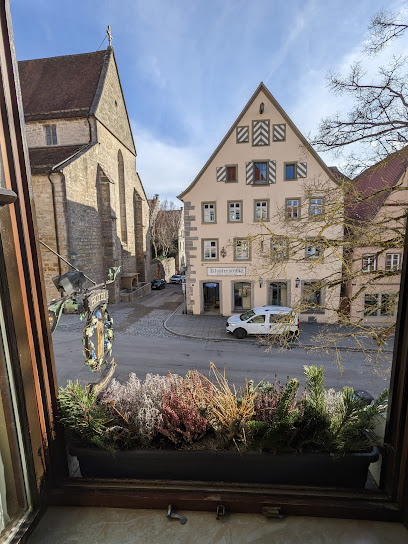
Gela's Lounge und Bar
0.4 km
Discover Gela's Lounge und Bar, a charming bar and cafe in Rothenburg ob der Tauber, perfect for unwinding with drinks and light bites.
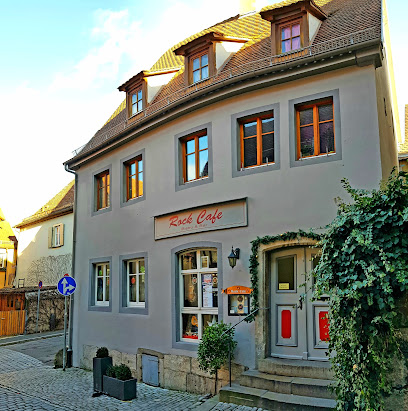
Alex´Pub
0.5 km
Discover the vibrant nightlife at Alex´Pub, Rothenburg ob der Tauber's top bar for crafted drinks and live entertainment amidst historic charm.
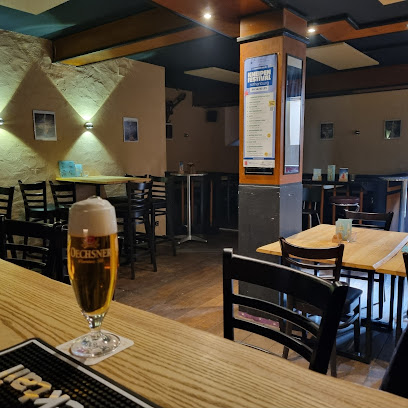
Better Together
0.5 km
Experience the vibrant atmosphere and friendly camaraderie at Better Together, a charming bar in Rothenburg ob der Tauber, perfect for unwinding with great drinks.

Dideldum e.V.
0.5 km
Discover the charm of Dideldum e.V., a cozy bar in Rothenburg ob der Tauber, where traditional German drinks meet a warm and inviting atmosphere.
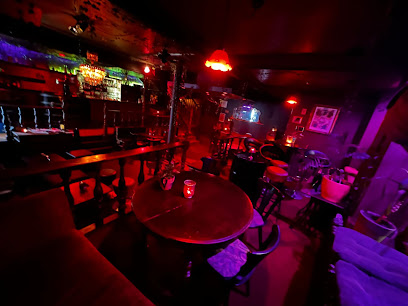
Württemberger Hof
0.6 km
Discover the charming Württemberger Hof in Rothenburg ob der Tauber, where traditional German drinks meet a cozy ambiance perfect for relaxation.

Guckloch 38
0.6 km
Experience the heart of German cuisine at Guckloch 38, a cozy pub and restaurant in Rothenburg ob der Tauber, perfect for travelers seeking local flavor.
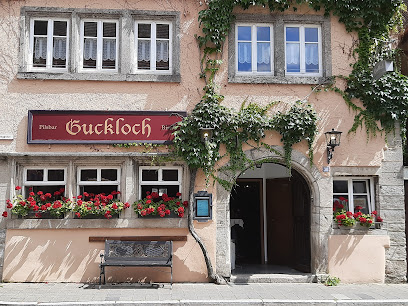
Liquid Corner
0.8 km
Experience the vibrant nightlife at Liquid Corner in Rothenburg ob der Tauber, where exceptional drinks meet a lively atmosphere.
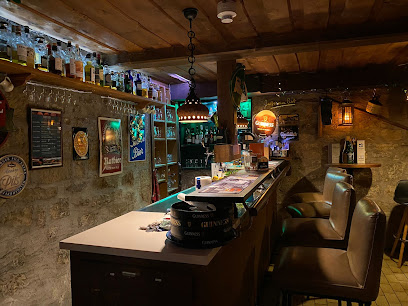
Triple
1.6 km
Experience the local charm and vibrant atmosphere of Triple Bar in Rothenburg ob der Tauber, where every drink tells a story.
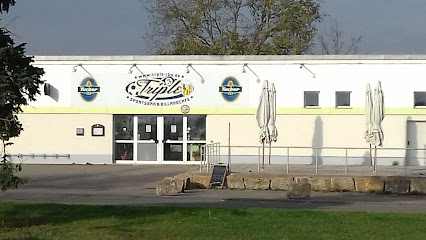
Irish Pub Ansbach
30.2 km
Immerse yourself in Irish culture at the lively Irish Pub Ansbach, where friendly vibes, delicious food, and great drinks await.
